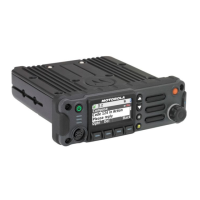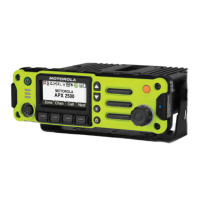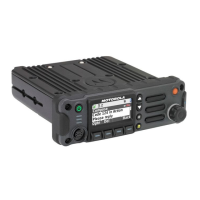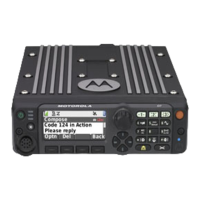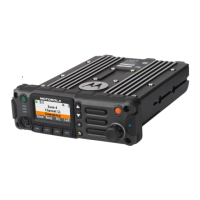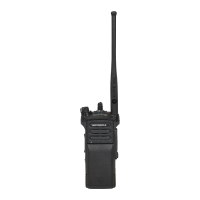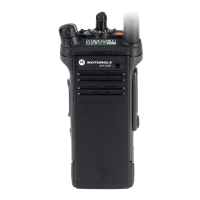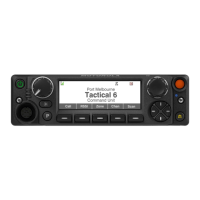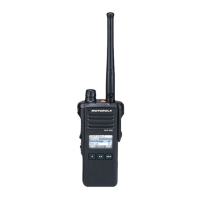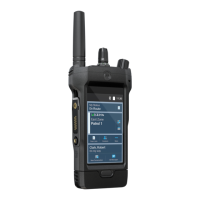What to do if Motorola APX 4000 Two-Way Radio has a general hardware failure?
- SSamuel SmithAug 14, 2025
If your Motorola Two-Way Radio experiences a general hardware failure, try turning the radio off and then on again.
What to do if Motorola APX 4000 Two-Way Radio has a general hardware failure?
If your Motorola Two-Way Radio experiences a general hardware failure, try turning the radio off and then on again.
What to do if Motorola Two-Way Radio shows DSP RAM fatal error?
If your Motorola Two-Way Radio displays a DSP RAM fatal error, try turning the radio off, and then on again.
What to do if Motorola APX 4000 has secure hardware error?
If your Motorola Two-Way Radio indicates a secure hardware error, attempt to resolve the issue by turning the radio off and then on again.
How to fix secure hardware fatal error on Motorola APX 4000?
To address a secure hardware fatal error on your Motorola Two-Way Radio, try turning the radio off, and then on again.
How to fix FLASH ROM codeplug checksum fatal error on Motorola APX 4000?
If your Motorola Two-Way Radio displays a FLASH ROM codeplug checksum fatal error, reprogram the codeplug.
How to fix FLASH ROM codeplug checksum non-fatal error on Motorola Two-Way Radio?
To resolve a FLASH ROM codeplug checksum non-fatal error on your Motorola Two-Way Radio, reprogram the codeplug.
What to do if keypad board is not connected properly to Motorola Two-Way Radio?
If the keypad board is not connected properly to your Motorola Two-Way Radio, ensure the keypad board is fixed in place.
What to do for external accessory non-fatal error on Motorola APX 4000 Two-Way Radio?
If your Motorola Two-Way Radio displays an external accessory non-fatal error: * Verify the external accessory is connected. * Ensure the external accessory powers up. * Turn the radio off, then on.
Identifies controls on the single knob radio model.
Identifies controls on the two knobs radio model.
Instructions for powering the radio on and off.
Steps to select a radio zone and channel.
Basic operations for receiving and transmitting.
Procedure to send an emergency alarm from the radio.
Procedure to send an emergency call from the radio.
Procedure to send a silent emergency call from the radio.
Icons for signal strength, roaming, direct mode, and monitoring.
Icons for power level, scan, secure operations, and GPS signal.
Icons for user login, data activity, and text entry modes.
Icons for Bluetooth connectivity and MFK feature status.
Icons for TMS status, message priority, and request reply.
Explains LED, top lightbar, and call type indicators.
Methods for selecting a radio zone.
Methods for selecting a radio channel.
Feature to quickly search for a channel by its alias.
Feature to save and change current zone/channel to a button/softkey.
Procedure to save zone and channel to a softkey.
Procedure to save zone and channel to a programmable button.
How to receive and respond to radio calls.
How to receive and respond to a talkgroup call.
How to receive and respond to a private call in trunking mode.
How to receive telephone calls in trunking mode.
Ways to select a zone, channel, ID, or talkgroup to make a call.
How to make a call to a group of users.
How to send an individual call alert page or initiate a private call.
How to send an individual call alert page if no answer.
How to make calls similar to standard phone calls.
How to toggle between talkaround and repeater modes.
How to ensure a channel is clear before transmitting.
How to listen for Private Line (PL) calls.
How the radio indicates receipt of a selective call.
How to call a specific individual for privacy.
How to define a group for conventional system users.
Procedure to select a talkgroup for communication.
How to send data calls to the dispatcher about predefined status.
How the dispatcher temporarily reassigns radios to a channel.
How to notify the dispatcher for a new dynamic regrouping assignment.
Categories for regrouped radios: Select Enabled and Select Disabled.
Feature to store frequent channels in Dynamic Zones.
Procedure to enter a dynamic zone and select a channel.
How to save a channel from a list within a dynamic zone.
How to save a channel by typing its name in a dynamic zone.
Procedure to delete a channel from the dynamic zone.
Provides address-book capabilities for initiating calls.
How to make a private call using the contacts list.
Steps to add a new contact entry with alias and numbers.
Procedure to remove a contact from a call list.
How to edit contact entry details like alias, ID, and call type.
Overview of scan lists and their types.
How to view the members of a scan list.
How to change scan list members and priorities.
How to change the scan list status icon.
How to change the priority status of a channel in a scan list.
How to monitor traffic by scanning channels.
Procedure to enable or disable the scan feature.
Temporarily change any channel to Priority-Two during scan.
How to temporarily remove unwanted channels from a scan list.
How to restore a deleted nuisance channel.
How the radio works like a pager to send alerts.
How the radio indicates receipt of a call alert page.
Methods for sending a call alert page.
Procedure to send a call alert page using a preprogrammed button.
Procedure to send a call alert page using the radio menu.
Procedure to send a call alert page using the Call menu.
How to indicate a critical situation using emergency features.
Radio behavior in emergency when reverting to original or preprogrammed channel.
Procedure to send a data transmission identifying the radio in emergency.
How to gain priority access to a talkgroup for emergency calls.
How to gain priority access to a channel/talkgroup for emergency.
Procedure to send an emergency alarm without audio/visual indicators.
Rules for changing channels during emergency operation.
Prevents the radio from being turned off while in Emergency state.
A safety feature that detects radio tilt angle and motion.
Sets time before Man Down condition warns the user.
Sets time before Man Down condition triggers an emergency alarm.
Describes audio and visual alerts when Man Down feature is triggered.
Describes alerts for Man Down Enhanced feature.
How to exit the Man Down feature without triggering an emergency.
Procedure to reinitiate the Man Down feature after exiting.
Steps to test the Man Down feature functionality.
Provides automated data application registration for the radio.
Methods for selecting or changing the ARS mode.
Allows user association for data applications with a friendly username.
Procedures for logging in as a user via menu or button.
Service for sending/receiving messages and running queries.
How to access TMS features via button or radio menu.
Steps to compose and send a new text message.
How to send predefined messages used frequently.
How to append priority status and request reply to a message.
Procedure to mark a message as important.
Procedure to remove priority status from a message.
Procedure to request a reply for a message.
Procedure to remove the request reply from a message.
How to receive text messages using Data or TMS buttons.
How to receive text messages using the radio menu.
How to view messages in the Inbox.
How to reply to a received text message.
How to access saved messages in the Drafts folder.
Information about messages saved in the Sent folder.
How to view messages in the Sent folder.
Procedure to delete a single text message.
Procedure to delete all messages in a selected folder.
Overview of the solution for sending/receiving messages and running queries.
Requirements for setting up the advanced messaging solution.
Extension of ARS/TMS for user authentication.
Steps to log in using two-factor authentication.
How to send a query using Quick Text with a flag.
How the radio indicates receipt of requested information in TMS format.
Provides the highest commercially available level of voice security.
Procedure to switch to secure transmission mode.
Procedure to switch to clear transmission mode.
Functions related to managing encryption keys.
Steps to load encryption keys into the radio.
Allows radio to be equipped with different encryption keys.
Procedure to select and save an encryption key.
How to select groups of encryption keys.
Procedure to erase encryption keys from the radio.
Enables permanent storage of Unique Key Encryption Key.
Feature to reduce channel noise and improve audio quality.
Features to enhance radio security and protect access.
Enhances security by protecting use of encryption keys.
Procedure to unlock the radio by entering a password.
How to change the radio's password.
How to change the tactical inhibit password.
How to enable or disable the radio lock feature.
Features to stun or render a radio inoperable remotely.
Procedure to stun a radio using an over-the-air command.
How to render another radio inoperable remotely.
Feature to render a radio inoperable if lost or misplaced.
System for determining radio location using GPS satellites.
How GPS technology establishes location coordinates.
Guidelines to maximize GPS fix determination ability.
Allows determining current location using a menu.
Feature to display location coordinates in MGRS format.
How to access the outdoor location feature via radio menu.
Procedure to save the current location as a waypoint.
How to view the current location and list of waypoints.
How to edit the alias (name) of a waypoint.
How to edit the coordinates of Home or Destination waypoints.
Procedure to delete a single saved waypoint.
Procedure to delete all saved waypoints.
How to measure distance and bearing from a saved waypoint.
How location feature behaves when Emergency is activated.
How to show peer location coordinates during voice transmissions.
Defines a virtual perimeter to trigger Dynamic Regroup commands.
Procedure for when the radio enters a Geofence area.
Controls for trunking system operations.
Ensures continuous communication during trunked system failure.
How the radio behaves when out of system range.
What happens when the zone controller loses site communication.
How to lock onto a specific site and not roam.
Button to view current site or force radio to change site.
How to view the name of the current site.
Features for connecting to proprietary Motorola accessories via Bluetooth.
Methods for turning on Bluetooth via menu or button.
Configures Bluetooth pairing type duration for retaining pairing information.
Defines buffer time for re-establishing Bluetooth connection when signal is out of range.
Feature for pairing via low frequency proximity.
Standard method for pairing Bluetooth devices.
Radio indications when Bluetooth connection is interrupted.
How to search for and pair Bluetooth devices.
Enables other devices to search for your radio via Bluetooth.
How to accept or refuse a pairing request from another device.
Disables Bluetooth visibility for your radio.
Verifies the correct device to pair using a Bluetooth Pairing PIN.
Procedure for pairing using a generated numeric PIN.
Procedure for pairing by manually entering the same PIN.
How to route audio from the radio to a Bluetooth headset.
How to route audio from a headset back to the radio.
How to adjust radio volume using a connected Bluetooth audio device.
How to view and clear Bluetooth device information.
Procedure to clear all Bluetooth device information.
How to edit the friendly name for Bluetooth devices.
Feature to upgrade configuration data over-the-air.
How to accept, delay, or reject a radio upgrade notification.
Enables audible indication of current feature mode, zone, or channel.
Intelligent lighting and audio alerts for special situations.
Procedure to send an alert notification to a single site.
Procedure to send SSA notification using manual site ID entry.
Procedure to send an alert notification to all sites.
Procedure to send an alert notification to all available sites.
Procedure to stop SSA notification for a single site.
Procedure to stop SSA notification using manual site ID entry.
Procedure to stop SSA notification for all sites.
Procedure to stop SSA notification for all available sites.
Functions for managing radio settings and information.
How to view incoming/outgoing call information.
How to select transmit power level for specific cases.
How to manually switch visual and audio settings.
How to display or hide the radio alias (name).
How to select the speaker route for radio audio.
How to enable or disable the display backlight.
How to lock keypad, buttons, and MFK to avoid inadvertent entry.
How to enable or disable tones for navigation buttons, controls, and keypad.
How to enable or disable voice transmission.
Feature that turns off the radio transmitter after a preset time.
How to set the radio's time and date.
Procedure to edit the radio's time and date settings.
How to filter unwanted calls with low signal strength or noise.
Options for digital channels to filter traffic based on access codes and talkgroups.
How to override coded squelch (DPL or PL).
How to view radio ID and automatically send radio ID on PTT press.
Feature to prevent users from talking over other conversations.
Feature that stops all transmission including voice and data.
Procedure to enable transmit inhibition.
Procedure to disable transmit inhibition.
Displays current capacity and charge cycles of an IMPRES™ Battery.
Percentage of current battery capacity.
Remaining battery power in mAh.
Number of charge cycles the battery has gone through.
How to access the battery information screen.
Information about the radio's settings and capabilities.
Displays general radio information like Host Version, Model Number, ESN.
Displays device name, IP address, and status.
Displays programmable functions assigned to radio controls.
Displays the radio's username if enabled.
How to display various radio information.
How to view device name, IP address, and status.
Displays programmable functions assigned to radio controls.
How to change the radio's username.
Caution regarding the radio's vent port and submergibility.
Instructions for cleaning the radio's external surfaces.
Materials needed for washing the radio and parts.
Guidelines for handling the radio to prevent damage.
Importance of proper repair and maintenance procedures.
Information on battery charge status, LED, sounds, and fuel gauge icons.
Information on Motorola's participation in battery recycling programs.
Lists compatible programming cables for APX radios.
Information on special channel assignments, like the Emergency Channel.
Instructions for using VHF Channel 16 for distress calls.
Compliance requirements for shipboard use per FCC Rule Part 80.
Table listing VHF marine channels and their frequencies.
Acknowledgment of communication.
A channel with traffic on it.
An RF signal with a continuous nature.
Service for automated data application registration.
Motorola standards for wireless digital communications.
Feature to automatically scan scan list members.
Wireless technology for exchanging data.
Process of forming a paired Bluetooth wireless connection.
Privately paging an individual with an audible tone.
Feature that opens audio circuit on RF carrier presence.
Software-controlled device managing trunked radios.
Group of characteristics like frequency pairs and parameters.
Channel providing continuous communication path in trunking systems.
Radio-to-radio communication, often via repeater.
A scan list containing only conventional channels.
Off-the-shelf commercial product.
A visual tracking marker on the display.
Radio state after multiple failed unlock attempts.
Type of coded squelch using data bursts.
An RF signal with a pulsed or discrete nature.
Individual managing radio system operations.
Processing of digital signals.
Feature allowing dispatcher to reassign radios to channels.
Ensures seamless switching to a backup master site.
Provides security encryption for data.
Unique identifier for the radio.
Allows communications during central controller failure.
US regulatory body for communications.
Modulation technique for radio signals.
To disconnect a call.
The initial display after radio self-test.
Combines voice and data communication.
Device for loading encryption keys.
Display technology.
Indicator light.
Safety feature detecting user position and motion.
Wireless technology for critical operations.
Motorola's standard for data communication.
Software-activated feature shown at the bottom of the display.
Checks channel activity by listening for static or conversation.
Set of unique features specific to a radio.
A number used for authentication.
Application streamlining critical operations and simplifying administration.
A software feature activated by a qualified technician.
Allows private conversation with another user in a talkgroup.
Sub-audible tone that receivers decode for communication.
A radio control that can have a feature assigned.
Button that engages the transmitter for sending.
Spectrum between audio and infrared light regions.
Facility that re-transmits signals to improve range.
Feature to call a select individual for privacy.
Digital P25 traffic with correct Network Access Code and talkgroup.
Circuitry that reduces or cuts off unwanted signals.
Interface for serial data communication.
Radio condition with muted speaker but receiving data.
Pre-defined text messages for conditional messages.
User talks on the channel selected before emergency state.
Bypass repeater to talk directly to another unit.
Organization or group of radio users communicating on the same path.
Service for sending/receiving messages and running queries.
Automatic sharing of communication paths among users.
Scan list including talkgroups from the same trunking system.
Key for encryption.
International time standard.
A grouping of channels.
Details what the warranty covers and its duration for products and accessories.
Outlines MOTOROLA's responsibilities and exclusive remedies under warranty.
Explains specific legal rights that may vary by state.
Instructions on how to obtain warranty service, including contact information.
Lists exclusions from warranty coverage, such as misuse or unauthorized modifications.
Provisions regarding Motorola's patents and software licenses.
Specifies that the warranty is governed by the laws of Illinois, U.S.A.
| IP Rating | IP67 |
|---|---|
| Operating Temperature | -30°C to +60°C |
| GPS | Optional |
| Frequency Range | VHF: 136-174 MHz, UHF: 380-470 MHz, 450-520 MHz |
| Power Output | VHF: 1-5W; UHF: 1-4W |
| Digital Protocol | APCO P25 |
| Dimensions | 5.2 x 2.4 x 1.5 inches (without battery) |
